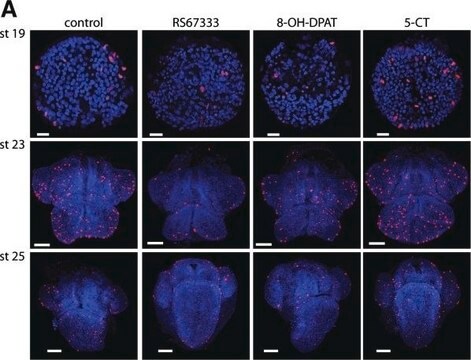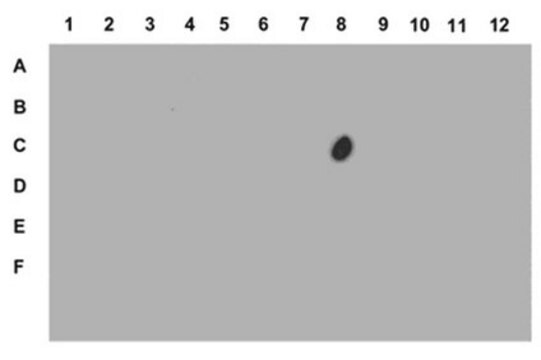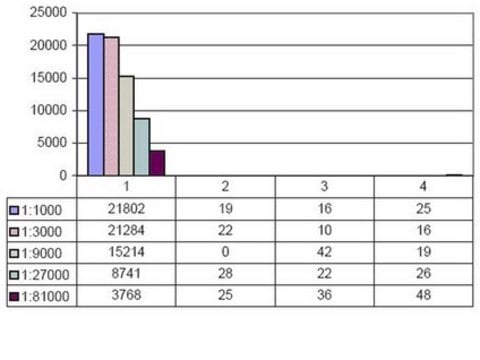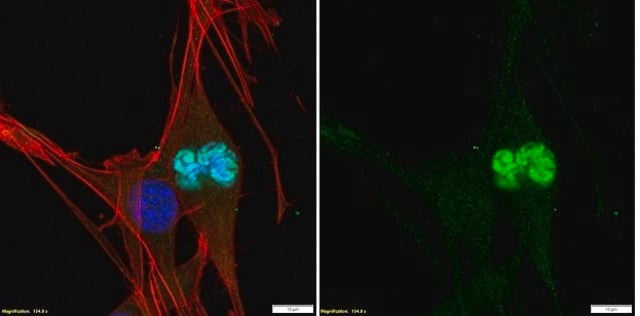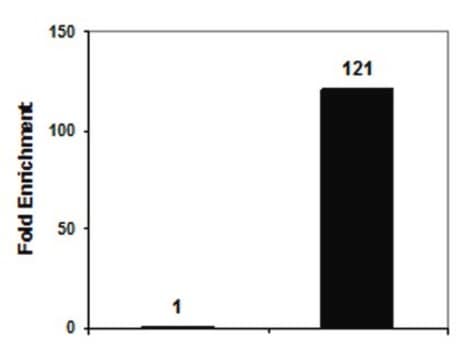05-598
Anti-phospho-Histone H3 (Ser10) Antibody, clone RR002
clone RR002, Upstate®, from mouse
Synonym(s):
H3 histone, family 3A, H3S10P, Histone H3 (phospho S10), H3 histone, family 3A, H3 histone, family 3B, H3 histone, family 3B (H3.3B)
About This Item
Recommended Products
biological source
mouse
Quality Level
antibody form
purified immunoglobulin
antibody product type
primary antibodies
clone
RR002, monoclonal
species reactivity
vertebrates, nematode, Caenorhabditis elegans, human
manufacturer/tradename
Upstate®
technique(s)
immunocytochemistry: suitable
immunohistochemistry: suitable
western blot: suitable
isotype
IgG
suitability
not suitable for ELISA applications
NCBI accession no.
UniProt accession no.
shipped in
wet ice
target post-translational modification
phosphorylation (pSer10)
Gene Information
human ... HIST1H3F(8968)
General description
Specificity
Immunogen
Application
This antibody showed no immuno-reactivity with an unphosphorylated Histone H3 peptide (residues 7-20), nor with other histone phosphopeptides.
Immunohistochemistry:
A 1:1000 dilution of this antibody detected mitotic cells in C. elegans embryo sections as shown by an independent laboratory.
Immunocytochemistry:
This lot showed positive staining of mitotic cells in cultures of HeLa cells undergoing exponential growth
Quality
Western Blot Analysis:
0.005-0.025 μg/mL of this lot detected phosphorylated Histone H3 in acid extracted proteins from colcemid-arrested HeLa cells.
Target description
Physical form
Analysis Note
UV-treated 293 cell extracts, UV-treated HeLa cell extracts, breast cancer tissue, HEPG2 cell extrats.
Other Notes
Legal Information
Not finding the right product?
Try our Product Selector Tool.
recommended
Storage Class Code
10 - Combustible liquids
WGK
WGK 1
Certificates of Analysis (COA)
Search for Certificates of Analysis (COA) by entering the products Lot/Batch Number. Lot and Batch Numbers can be found on a product’s label following the words ‘Lot’ or ‘Batch’.
Already Own This Product?
Find documentation for the products that you have recently purchased in the Document Library.
Our team of scientists has experience in all areas of research including Life Science, Material Science, Chemical Synthesis, Chromatography, Analytical and many others.
Contact Technical Service

